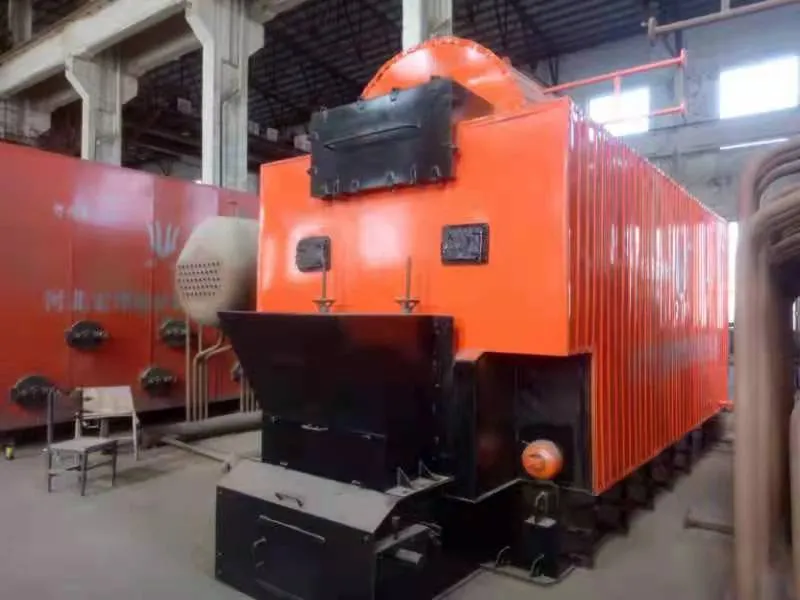
नोभ . 11, 2024 20:35 Back to list
oil fired hot water boiler diagram
Understanding the Oil-Fired Hot Water Boiler A Comprehensive Overview
An oil-fired hot water boiler is a crucial component in many heating systems, especially in areas where natural gas is not readily available. These boilers convert oil into thermal energy that heats water, which can then be distributed throughout a building for space heating, domestic hot water, or process heating. Understanding the components and operation of an oil-fired hot water boiler is essential for effective maintenance and troubleshooting.
The Diagram A Visual Representation
When you look at a diagram of an oil-fired hot water boiler, you come across various components that work in harmony to ensure the efficient functioning of the system. Here’s an overview of these essential components
1. Boiler Shell This is the outer casing that houses the entire boiler system. It provides insulation and maintains the temperature of the water inside.
2. Burner The burner is where the oil is combusted. It mixes oil with air to create a combustible mixture that ignites and generates heat. Most modern burners have sophisticated controls to ensure optimal combustion efficiency.
3. Heat Exchanger The heart of the boiler, the heat exchanger, is responsible for transferring heat from the combustion gases to the water circulating within the boiler. This process heats the water, which may then flow to radiators, underfloor heating systems, or domestic hot water tanks.
4. Smoke Stack/Flue After combustion, the byproducts (flue gases) need to be vented safely out of the building. The smoke stack or flue allows these gases to exit. It's vital that this system is properly installed and maintained to ensure safety and efficiency.
5. Pump The circulatory system relies on a pump to move hot water from the boiler to the heating distribution system. It helps maintain the flow and ensures that hot water reaches all parts of the building.
6. Expansion Tank As water heats up, it expands. An expansion tank accommodates this increase in volume and relieves excess pressure within the system, preventing potential damage.
oil fired hot water boiler diagram

7. Thermostat and Controls Modern oil-fired hot water boilers come equipped with thermostats and control systems that monitor and regulate water temperature. These devices help in optimizing energy usage and can significantly improve overall efficiency.
8. Fuel Supply Line This pipeline delivers heating oil from the storage tank to the burner. It must be well-maintained to prevent leaks and ensure a steady supply of fuel.
9. Filters To keep the burner functioning optimally, filters are installed in the fuel line to remove impurities from the oil. Regularly cleaning or replacing these filters is critical to maintaining efficiency.
Operational Overview
The operation of an oil-fired hot water boiler begins when the thermostat calls for heat. The burner ignites the oil, producing hot combustion gases that travel through the heat exchanger, transferring heat to the water. The heated water then circulates through the system, reaching radiators or other heating elements.
As hot water is drawn off for domestic use or heating, the boiler automatically turns on to maintain the desired temperature. This automated process ensures that comfort levels are consistent throughout the building.
Maintenance Considerations
Regular maintenance is essential for the longevity and efficiency of an oil-fired hot water boiler. This includes routine inspections, cleaning of the burner and heat exchanger, and checking for leaks or corrosion. A well-maintained boiler not only performs better but also reduces energy costs and the risk of breakdowns.
Conclusion
Oil-fired hot water boilers are effective and reliable systems that provide warmth and hot water in many homes and commercial buildings. By understanding the diagram and components, users can better appreciate how these systems work and the importance of regular maintenance. As technology advances, newer models continue to improve in efficiency, offering more sustainable solutions for heating and hot water needs.
-
Oil Fired Hot Water Boilers Sale - High Efficiency & Affordable
NewsJul.31,2025
-
High-Efficiency Commercial Oil Fired Steam Boiler for Industry
NewsJul.30,2025
-
High-Efficiency Biomass Fired Thermal Oil Boiler Solutions
NewsJul.30,2025
-
High Efficiency Gas Fired Thermal Oil Boiler for Industrial Heating
NewsJul.29,2025
-
High-Efficiency Gas Fired Hot Water Boiler for Sale – Reliable & Affordable
NewsJul.29,2025
-
High Efficiency Biomass Fired Hot Water Boiler for Industrial and Commercial Use
NewsJul.29,2025
Related PRODUCTS






















